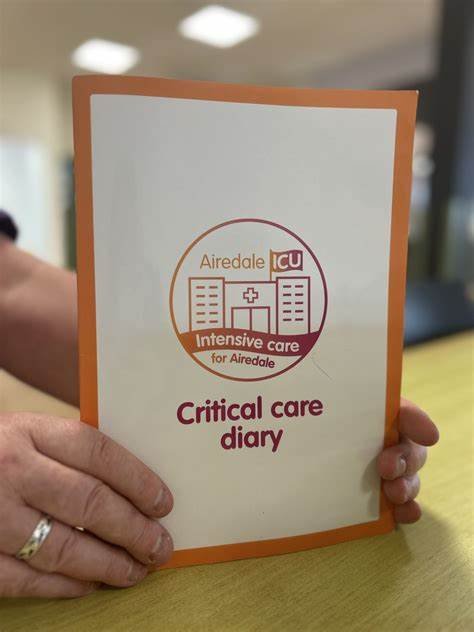Enhancing comfort in intensive care patients is essential for their recovery and overall well-being. Patients in the ICU often face physical and emotional challenges due to their critical condition. As a caregiver, understanding how to provide comfort can significantly impact their healing process. In this article, we’ll discuss various strategies and tips for enhancing comfort in intensive care patients.
Understand the Patient’s Needs
Every patient has unique needs and preferences. When it comes to enhancing comfort in intensive care patients, it is vital to communicate with them or their families. Take time to ask about their preferences regarding noise levels, lighting, and personal items. This communication helps healthcare providers tailor the care plan to meet the specific needs of each patient, ensuring they feel more at ease.

Create a Soothing Environment
The environment plays a crucial role in patient comfort. A calming atmosphere can significantly enhance comfort in intensive care patients. To achieve this, consider adjusting the lighting to a softer setting, using dimmers if available. Reducing noise levels is also important; soft background music can create a relaxing ambiance. Additionally, keep the room clean and clutter-free, allowing the patient to focus on their recovery rather than distractions.
Address Pain Management
Pain management is a key factor in enhancing comfort in intensive care patients. It is essential to assess pain levels regularly and respond promptly to any discomfort. Use appropriate pain relief methods, such as medications, heat packs, or relaxation techniques, depending on the patient’s condition. Encourage open communication about pain, as patients may hesitate to voice their discomfort. Regularly monitoring and managing pain can lead to improved comfort and satisfaction.
Promote Mobility When Possible
Encouraging mobility is an effective way to enhance comfort in intensive care patients. While some patients may be too weak to move around, small movements can help. Simple actions, like adjusting their position in bed or gently stretching limbs, can reduce stiffness and promote circulation. When feasible, assist patients in sitting up or taking short walks around the room. These small steps can make a significant difference in their comfort levels and overall recovery.
Provide Emotional Support
Patients in intensive care often experience anxiety, fear, and loneliness. Providing emotional support is crucial for enhancing comfort in intensive care patients. Make an effort to spend time with them, listen to their concerns, and offer reassurance. Encourage family visits, as familiar faces can greatly improve emotional well-being. Additionally, consider involving a mental health professional when needed. Providing emotional support creates a more comforting and supportive environment.
Ensure Proper Nutrition and Hydration
Proper nutrition and hydration play a vital role in a patient’s comfort and recovery. Ensure that intensive care patients receive adequate nutrition tailored to their specific needs. Work with a dietitian to create meal plans that accommodate any dietary restrictions. Furthermore, encourage hydration by offering fluids regularly, especially if the patient is alert and able to drink. Nutrition and hydration directly affect a patient’s comfort and healing process.
Facilitate Effective Communication
Effective communication is essential for enhancing comfort in intensive care patients. Use clear and simple language when discussing treatment plans or procedures. Ensure that patients understand what to expect and encourage them to ask questions. Providing written materials or visual aids can help reinforce information. By fostering open communication, patients will feel more comfortable and confident in their care.
Personalize Care with Familiar Items
Personal items can help enhance comfort in intensive care patients by creating a sense of familiarity. Allow patients to keep personal belongings, such as photographs, blankets, or small mementos, close by. These items can provide emotional support and help patients feel more at home in an unfamiliar environment. Personalizing care with familiar items can also encourage a positive mindset, which is crucial for recovery.
Incorporate Relaxation Techniques
Incorporating relaxation techniques can significantly enhance comfort in intensive care patients. Techniques such as deep breathing, guided imagery, or gentle massage can help reduce stress and anxiety. Healthcare providers can offer to guide patients through these techniques or involve trained professionals when appropriate. By integrating relaxation methods, patients can achieve a greater sense of comfort and well-being.
Encourage Participation in Care Decisions
Finally, involving patients in their care decisions can enhance comfort in intensive care patients. Encourage them to express their preferences regarding treatments, medications, and daily routines. When patients feel empowered to participate in their care, they are more likely to feel comfortable and respected. This collaborative approach fosters a sense of control, which can be comforting in a challenging environment.
Conclusion
Enhancing comfort in intensive care patients is essential for their overall well-being and recovery. By understanding their unique needs, creating a soothing environment, managing pain, and providing emotional support, healthcare providers can make a significant difference. It is important to involve patients in their care and personalize their experiences to promote comfort. Implementing these strategies can help improve patient satisfaction and contribute to positive health outcomes in the ICU.











